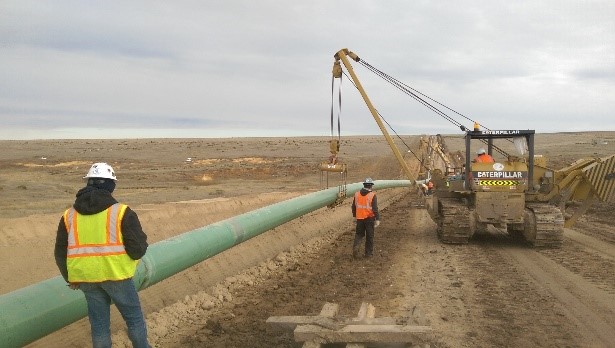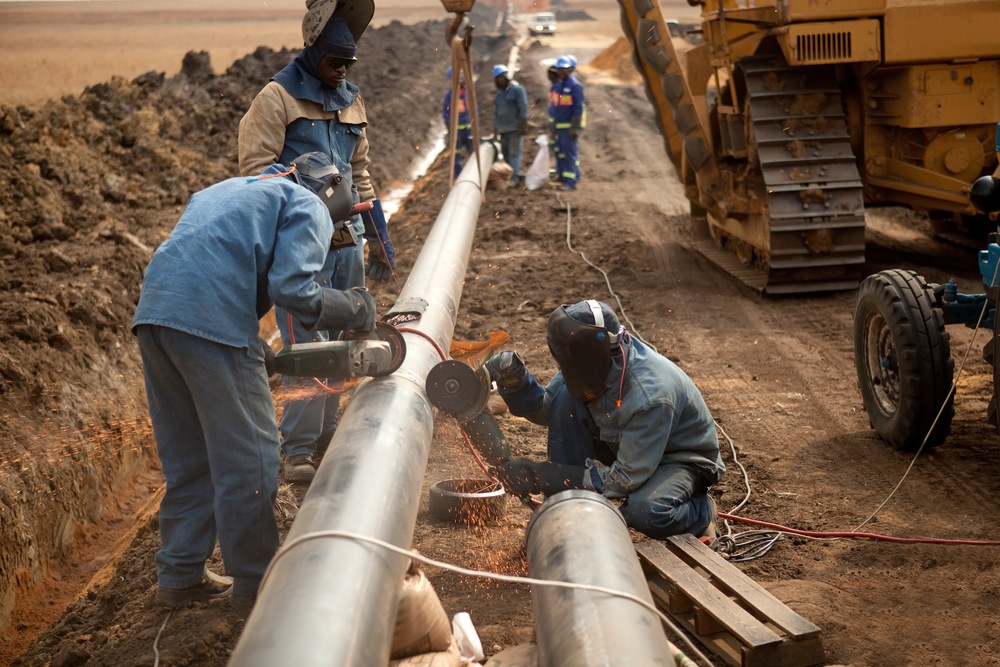When to Call For Immediate Help From Creek Pipe trenching services
Wiki Article
Comprehending the Fundamentals of Pipes Installation: What You Required to Learn About the Process
Proper pipe installation is necessary for any kind of pipes system. It requires careful factor to consider of numerous factors, consisting of product selection and adherence to regional guidelines. A well-planned layout can avoid concerns like pressure loss, while the right tools guarantee reliable joining methods. Also experienced installers can make typical blunders. Understanding these fundamentals can cause a more effective and resilient system, triggering a better check out the key elements involved in the process.Choosing the Right Materials for Pipe Installation
When considering pipe installation, the option of ideal products is vital to making certain longevity and functionality. Various materials are available, each offering one-of-a-kind advantages and considerations. For example, PVC pipes are light-weight, resistant to rust, and cost-effective, making them optimal for residential pipes. On the other hand, copper pipes, understood for their long life and ability to hold up against high temperatures, are often preferred for heating systems.Additionally, galvanized steel pipes provide strength and resilience, ideal for sturdy applications, although they are at risk to rust over time.For below ground setups, polyethylene pipelines are preferred as a result of their adaptability and resistance to tension breaking. Correct product selection depends upon the certain requirements of the task, consisting of pressure ratings, temperature level variations, and the chemical nature of the liquids being transported - Creek Pipe Midland. Inevitably, educated selections regarding pipe products contribute greatly to the general success and long life of pipes systemsComprehending Local Structure Codes and Laws
How can understanding local building ordinance and regulations influence pipe installation? Knowledge with these codes is important for making certain that pipe installments are safe, certified, and effective. Regional building codes lay out details needs pertaining to products, installation strategies, and security measures, which should be stuck to in order to stay clear of potential legal issues and expensive fines.Failure to conform can bring about assessments being fallen short, hold-ups in job conclusion, or even mandated removal of poorly set up pipes. Furthermore, comprehending zoning legislations and guidelines can affect the kind of products enabled, in addition to the techniques made use of for installation.Contractors and homeowners alike need to invest time in evaluating neighborhood laws prior to beginning any installation project. This positive strategy not only advertises safety and security yet likewise boosts the general top quality and longevity of the pipes system, ultimately cultivating long-term performance and fulfillment.Preparation Your Pipe Layout and Layout
Proper planning of pipe design and layout is crucial for attaining an efficient plumbing system. This procedure starts with examining the certain needs of the area, thinking about the location of components and home appliances. Exact measurements ensure that pipelines are properly directed, minimizing bends and transforms that can lead to press loss.Consideration of the flow prices and the sorts of materials made use of is important, as various products have varying resilience and compatibility with pipes systems. Additionally, the designer ought to account for future developments or alterations to the design, permitting versatility in case of renovations.Efficient water drainage and ventilation are likewise substantial elements of the style, as they avoid clogs and guarantee appropriate waste removal. Cooperation with neighborhood building codes guarantees compliance and security, which is paramount in any plumbing installation job.Essential Devices and Devices for Installation
Effective pipe installation depends upon having the right tools and devices at hand. Crucial devices include pipe cutters for clean cuts, wrenches for tightening up installations, and pliers for clutching and turning pipelines. Additionally, a level assurances pipelines are installed evenly, while a determining tape help in accomplishing accurate lengths.For details products, a blowpipe may be essential for copper pipes, while a PVC cutter is vital for plastic alternatives. Security devices, such as handwear covers and safety glasses, protects installers from prospective dangers throughout the process.A pipe bender can be specifically valuable for developing smooth contours without endangering stability, while a torque wrench guarantees that links are protected to the manufacturer's specifications.Having these devices easily available not just promotes a smoother installation process however likewise adds to the general durability and performance of the pipes system. Appropriate tools is vital in accomplishing lasting results.Strategies for Proper Pipe Signing Up With and Sealing
Achieving a protected and leak-free connection between pipes needs mindful interest to joining and sealing methods. Numerous approaches exist, each suited to different pipe products and applications (Creek Pipe reviews). As an example, welding is frequently used for metal pipelines, making certain durable links through warmth fusion. On the other hand, plastic pipelines gain from solvent concrete or combination welding, creating strong, irreversible bonds.Threaded connections are usual in both steel and plastic piping, calling for accurate positioning and the usage of ideal sealants, such as Teflon tape or pipe dope, to avoid leakages. Compression installations provide an additional option, where mechanical pressure secures the pipes with each other, making them conveniently took apart for maintenance.Regardless of the approach picked, correct prep work is vital. This includes cleaning pipe ends and ensuring they are complimentary from particles. Carrying out these strategies faithfully will improve the longevity and integrity of the pipe system, eventually adding to its reliable performanceTypical Errors to Avoid During Installation
Throughout pipe installation, preventing typical mistakes is essential for ensuring a reputable and effective system. One frequent mistake is falling short to gauge and reduce pipes properly, which can result in improper installations and leakages. In addition, disregarding to check the compatibility of materials can result in rust or other damage with time. Improperly protecting joints and links can likewise produce powerlessness in the system, creating possible failures.Another usual blunder is ignoring the value of slope and drainage; pipelines must be set up at the appropriate angle to facilitate correct flow. Inadequate support for pipes can bring about sagging and anxiety, affecting the stability of the system. Inevitably, overlooking local codes and guidelines can result in expensive rework and security risks. By understanding these challenges, installers can significantly enhance the longevity and performance of pipe systems.Maintenance Tips for Lasting Pipe Systems
To ensure the longevity of pipe systems, normal evaluations and cleansing are crucial practices. These steps help determine potential concerns prior to they rise right into significant troubles. Furthermore, employing proper insulation techniques can better shield pipes from temperature changes and ecological variables.Routine Examinations and Cleaning Up
Routine examinations and cleaning are important for keeping the durability and performance of pipe systems. Regularly checking out pipes for signs of rust, leakages, or clogs can help identify possible concerns before they rise right into expensive repair services. Cleaning pipelines periodically eliminates accumulation that can restrict circulation and advertise deterioration. It is suggested to set up examinations at the very least yearly, however extra frequent checks may be needed in high-usage settings. Making use of specialist solutions for thorough cleaning assurances that all debris is successfully gotten rid of. Additionally, maintaining documents of assessments and upkeep tasks aids in tracking the system's health and wellness with time - Creek Pipe near me. By focusing on these practices, property owners can boost the reliability and lifespan of their pipe systemsAppropriate Insulation Methods
Effective insulation strategies play a vital duty in preserving the efficiency and longevity of pipe systems. Appropriate insulation minimizes warmth loss in hot water pipelines and avoids freezing in cool water pipes, considerably minimizing energy prices and possible damages. Common materials made use of for insulation consist of fiberglass, foam, and rubber, each offering differing levels of thermal resistance. It is vital to assure that insulation is applied consistently, covering all revealed locations without voids. In addition, safeguarding insulation with appropriate bolts assists preserve its setting and effectiveness gradually. Regular examinations ought to be performed to recognize deterioration, ensuring timely replacements. By carrying out these methods, pipe systems can operate efficiently and have an extended solution life, inevitably benefiting both the atmosphere and the house owner.
Often Asked Inquiries
How Do I Determine the Appropriate Pipe Dimension for My Project?
Determining the appropriate pipe dimension entails evaluating the task's flow needs, pressure specifications, and the type of fluid being moved. Consulting design standards and carrying out calculations warranties perfect efficiency and effectiveness in the installation process.What Are the Ecological Influences of Various Pipe Materials?

Can I Set Up Pipes Myself or Should I Work with a Professional?
The concern of whether to set up pipelines independently or Creek Pipe HDPE installation work with a professional commonly relies on the person's ability degree and job intricacy. A professional may assure conformity with laws and lower prospective lasting issues.
The Length Of Time Can I Anticipate My Pipe Installation to Last?
The longevity of pipe installation differs significantly, typically lasting 20 to 100 years, depending on products, installation top quality, and maintenance. Regular examinations and correct care can improve toughness and protect against premature failings.
What Are the Indications of a Failing Pipe System?
Indicators of a stopping working pipe system consist of frequent leaks, unusual water pressure modifications, stained water, mold development, and relentless dampness. House owners need to keep track of these indications to avoid pricey damages and warranty timely fixings are made.Report this wiki page